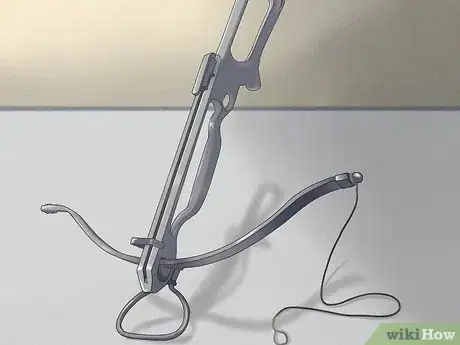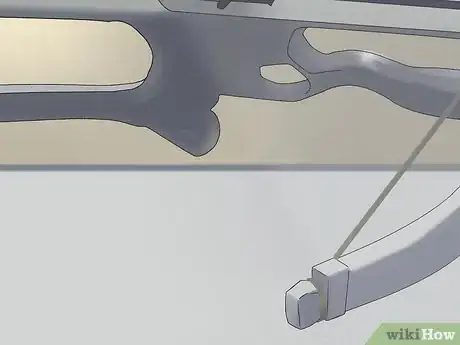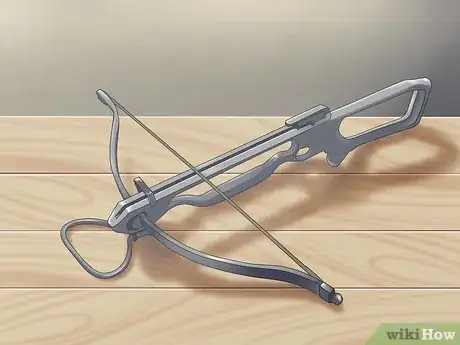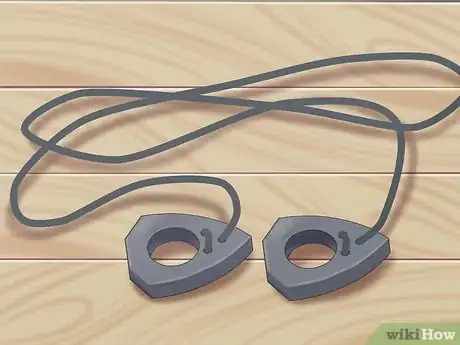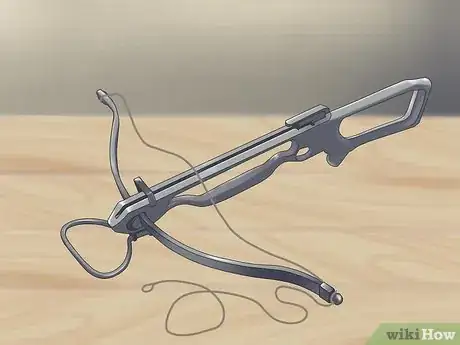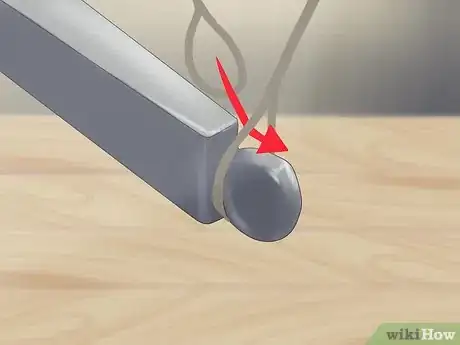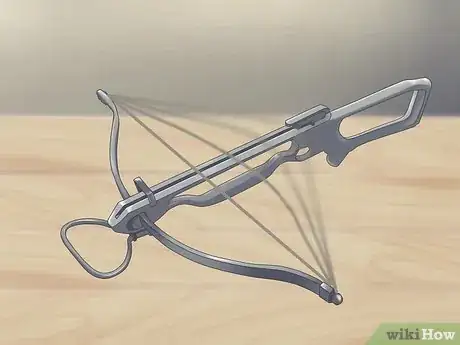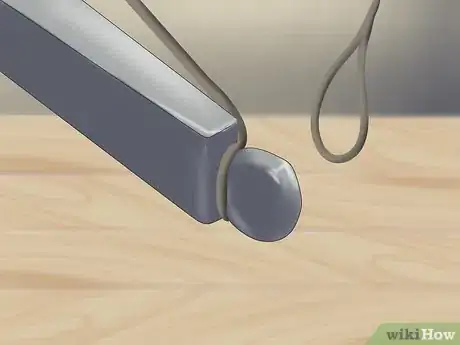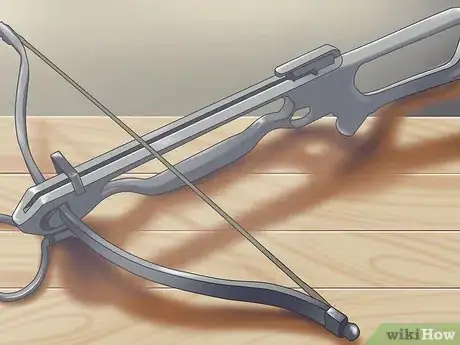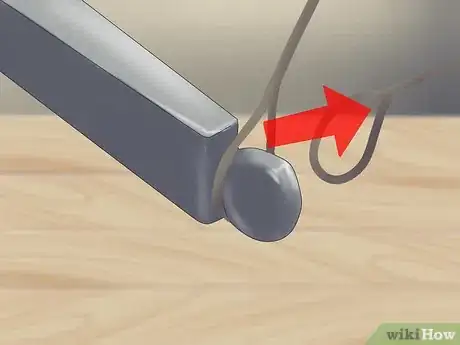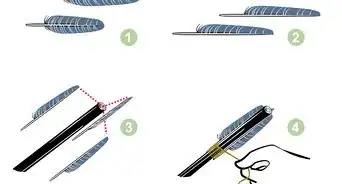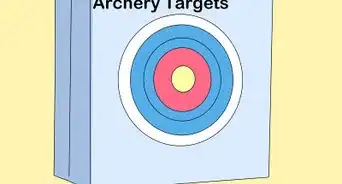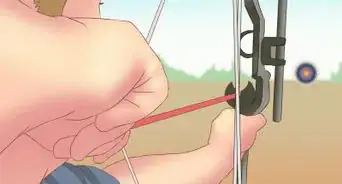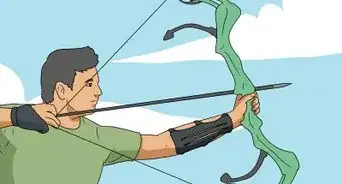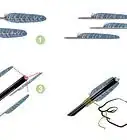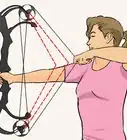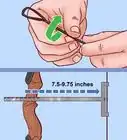X
wikiHow is a “wiki,” similar to Wikipedia, which means that many of our articles are co-written by multiple authors. To create this article, volunteer authors worked to edit and improve it over time.
This article has been viewed 48,441 times.
Learn more...
Stringing a crossbow can be difficult and dangerous if you don't know what you're doing. When you follow the correct procedures, however, you can string a crossbow with or without a special crossbow stringer.
Steps
Method 1
Method 1 of 2:
Method One: String a Crossbow by Hand
-
1Know when to use this method. This method requires you to use more arm strength and is easiest when done on crossbows with a lower draw weight.[1]
- Your weight and strength will also determine how easy this method is. You will need to apply more force when using this method, so the heavier and more muscular you are, the easier it will be.
- Note that this method cannot be used on a compound crossbow with a pulley at the end.
-
2Hook the crossbow string onto one nock. Hook one side of the crossbow string onto one nock on the bow. The other side should be loose and the other nock should be empty.
- Make sure that the loop of the bowstring is properly seated inside of this first nock.
-
3Angle the crossbow on a hard surface. Place the nocked side of the prod (bow) on the floor or a similar hard surface. Tilt the crossbow so that the empty nock it tilted upward toward your dominant hand.
- Steady the butt (the back of the barrel) with your non-dominant hand as you tilt the bow.
- Hold the loose end of the string with your dominant hand as you position the bow. Grabbing it now will make it easier for you to maneuver it later.
- When you are indoors, a hard floor will usually suffice. If you are stringing the crossbow outside, however, you should prop it against a wooden block. When a wooden block is not available, take off your shoe and set it on the ground (with the sole facing up) and prop the crossbow against that.
- If using a block of wood, you could even drill a shallow hole into the center of the block to help prevent the prod from slipping around as you work. If you do this, place the nocked tip of the prod directly inside that hole.
-
4Apply pressure to the bow using your foot. Carefully step on the prod part of the weapon, positioning your foot just next to the barrel on the side of the prod opposite your nocked end.
- It is easiest to use your dominant foot while doing this.
- Lean into the bow as you do this to maximize the amount of pressure you apply.
- Consider stepping on the prod with your bare foot to avoid any accidental damage to the prod.[2]
- Keep your foot as close to the center of the prod as possible. Doing it this way will help the prod bend evenly.
- If your crossbow has a stirrup, do not put any pressure on it. Doing so could warp or otherwise wreck it.
-
5Pull up on the barrel of the crossbow. Slide your dominant hand down a little onto the barrel of the crossbow. Grab onto the barrel and pull it up, toward your torso.
- Continue applying pressure with your foot as you do this.
- You should see the prod bending once you apply enough pressure to both the prod and the barrel.
- Your non-dominant hand should be pulling up on the empty end of the prod from the front to help bend it toward you.
-
6Nock the other end of the string. Slip the loose end of the string onto the empty bow nock.
- You will likely need to release the barrel of the crossbow and use your dominant hand to hook the string onto this second nock.
-
7Check your work. Pick up your crossbow and examine both nocks. The string loops should be securely in place for each side.
- If the string is not secure in both nocks, attempting to fire your crossbow will likely be unsuccessful and may even be dangerous.
-
8Remove the string using the same process. Bowstring removal is done in the same way, but in reverse.
- Position the on the ground in the same way as before and apply the same sort of pressure.
- Unhook the string from the bow nock facing you.
- Pick up the crossbow and unhook the string from the other nock.
Method 2
Method 2 of 2:
Method Two: String a Crossbow with a Stringer
-
1Use this method for any crossbow. This method can be used with any crossbow regardless of the draw weight and the amount of strength or body mass you have.
- As a general rule, using a stringer is safer and easier than stringing a crossbow without one. This method can take a little longer, however.
-
2Place one end of the bowstring in place. Loop one end of the actual string in one nock of the bow.[3]
- Keep the crossbow lying flat on the ground or on a working surface as you do this.
-
3Place the stringer on both ends. Hook one end of the stringer onto the loaded nock of your bow, directly on top of the bowstring. Draw the stringer behind the prod of the crossbow and hook the other end onto the other nock.
- Note that the bowstring must be shorter than both the bow span and the crossbow stringer, which is why the bowstring itself cannot be hooked directly onto both ends without the application of pressure. The crossbow stringer should be roughly the same length as your bow span, however.
-
4Cock the crossbow. Tilt the crossbow so that it stands vertically with the barrel pointing up. Pull the stringer back and hook the center of it into the latch of the crossbow.
- If the crossbow has a stirrup, place your foot in the stirrup as you draw the stringer back and cock it in place.
- The stringer essentially serves as a weak crossbow string. It should be easier for you to cock it, making it easier for you to bend the bow far enough to load the real bowstring on.
-
5Hook the other end of the bowstring in place. Pick up the loose loop of the actual bowstring and hook it into its appropriate nock.
- Make sure that the loop of the bowstring is beneath the loop of the stringer. It can take some time, concentration, and effort to maneuver the bowstring loop underneath the stringer loop.
-
6Fire the crossbow. Release the safety and pull the crossbow trigger to fire the empty crossbow. When you do this, one end of the stringer should naturally fall off.
- If loaded correctly, both ends of the actual bowstring should still be in their correct places.
-
7Remove the other end of the stringer. Slowly remove the other end of the stringer from the other nock, working with care to avoid accidentally removing or loosening the bowstring, as well.
- The stringer and bowstring will likely be intertwined at this point, making removal a bit tricky.
- You may need a flat screwdriver or similar tool to help you pry the stringer off.
-
8Check your work. Look at both nocks of your crossbow to verify that the bowstring is seated securely in each one.
- An improperly seated bowstring can be a safety hazard.
-
9Reverse the process to remove the bowstring. If you need to remove the bowstring, attach the stringer to both nocks and cock the crossbow with the stringer instead of the actual bowstring. Unhook both ends of the actual bowstring, then fire the crossbow and remove the stringer off both ends by hand.
- You may also opt to only unhook one end of the bowstring while the crossbow is cocked. If you do this, the other end can be removed when you take the stringer off.
Warnings
- Keep the safety on as you load the crossbow. Doing so can prevent an accidental misfire and any possible injuries associated with it.⧼thumbs_response⧽
Things You'll Need
- Crossbow
- Crossbow string
- Hard floor or similar hard surface
- Stringer (optional)


